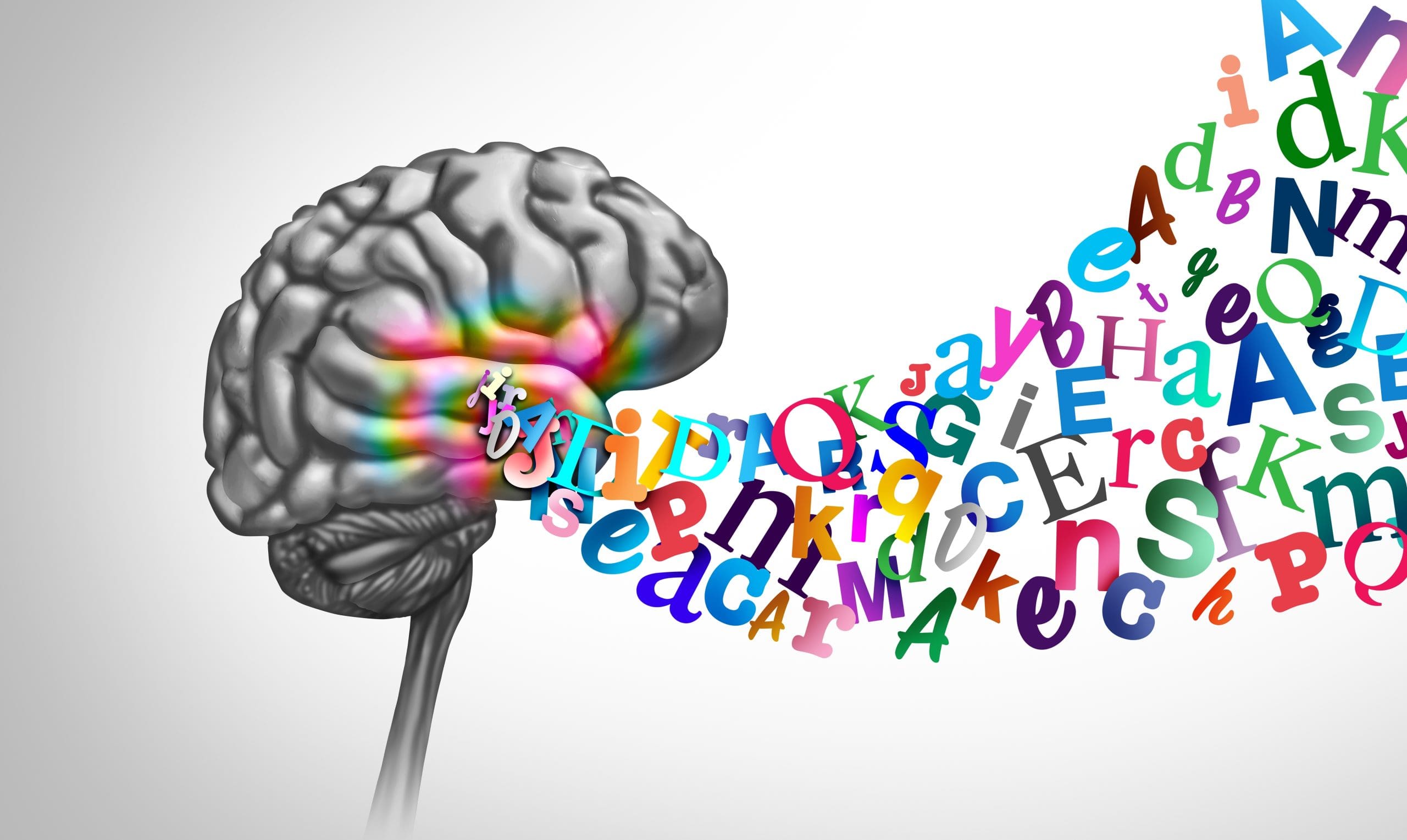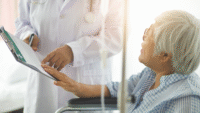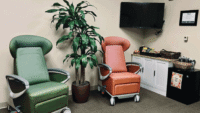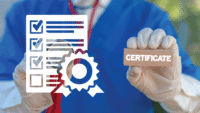Evidence-based patient education guidelines
- Health literacy relates to an individual’s ability to find, understand, and use healthcare information and services.
- Only one in ten people have proficient health literacy.
- The Health Care Education Association offers open source guidelines to help healthcare providers develop effective and efficient patient education.
Every day in the United States, patients and their caregivers must make healthcare decisions and take actions to optimize health. Healthy People 2023 defines this concept—health literacy—as “the degree to which individuals have the ability to find, understand, and use information and services to inform health-related decisions and actions for themselves and others.”
However, White found that only one in ten people have proficient health literacy. McDonald and Shenkman discovered an association between low health literacy and less-than-ideal outcomes—decreased overall health, increased hospital readmissions, and other adverse clinical events. To improve outcomes, patients and caregivers should engage in learning that leads to health literacy.
Addressing social determinants of health
Medication adherence in underserved populations
Words matter: Scripting to enhance patient engagement
Healthcare organizations must support individuals in their efforts to achieve health literacy. For nursing, specifically, this means providing patient education, which Bastable defines as helping those who consume healthcare learn how to incorporate health-related behaviors (knowledge, skills, attitudes) into their daily lives as a means of achieving optimal health.
The Health Care Education Association (HCEA), a nonprofit multidisciplinary professional organization comprised of healthcare educators, works to improve healthcare outcomes via evidence-based education. To achieve this goal, HCEA offers open source guidelines to support nurses and other healthcare providers as they develop effective and efficient patient education.
HCEA guidelines
HCEA developed the Patient Education Practice Guidelines for Health Care Professionals after examining resources and identifying the need for concise parameters related to evidence-based approaches. The guidelines provide a comprehensive outline of the educational process and concrete strategies for use within a clinical setting. HCEA developed the guidelines after reviewing 10,000 publications through a literature search supported by the National Network of Libraries of Medicine Middle Atlantic Region Health Literacy Grant.
The HCEA structured the guidelines around APIE (Assessment, Planning, Implementation, Evaluation), Bastable’s foundational components of the patient education process. Effective patient education must include each component; skipping one puts the patient at risk for suboptimal education. Healthcare professionals frequently focus on implementing education—telling the patient what to do. This misses the opportunity to address a patient’s concerns, build on their prior knowledge, use their preferred learning method, and evaluate the extent of learning. Patients will more likely understand and adhere to treatment plans if we incorporate their priorities and preferences into the education approach.
From the literature related to each of the APIE components, overarching elements emerged: patient-centered, patient engagement, plain language, and patient behaviors/actions. When viewing the literature from a big picture perspective, patient education ideally is an interactive process focused on desired behaviors and patient priorities. In other words, present patient education as a conversation, not a checklist of topics told to the patient.
In addition to the APIE components, the HCEA guidelines contain FAQs, a quick guide, and references arranged by each component’s strategies, as well as alphabetically. Nurses can benefit from familiarizing themselves with the APIE process and learning how to apply evidence-based practice to everyday patient education.
What follows are examples from each component of the patient education process. For the purposes of this article, “patient” refers not only to the patient but also to family, guardians, friends, partners, significant others, and consumers.
Assessment
The assessment component contains steps to guide you toward understanding patient status or motivation. You can obtain information for the assessment from various sources, including the medical record and, most importantly, the patient and significant others. The learning assessment focuses on sociodemographic information, support systems, culture, values, beliefs, learning barriers, health issues, worries, health knowledge, goals, priorities, and learning preferences. Use specific assessment tools, such as Patient Activation Measure and motivational interviewing, to obtain this information.
Although assessment serves as an initial step in patient education, you can use assessment strategies throughout the process to clarify or focus learning. Frequently, patient education is iterative as you use various components repeatedly in the conversation.
To start the assessment, use phrases from the guidelines, such as “What do you fear most about your sickness?” “Do you have beliefs or feelings related to your health condition that we need to know so we can help you learn to care for yourself?” “Do you know anyone who has this condition?” “What do you know about caring for someone with this condition?” “How would you rate your confidence to follow instructions and care for yourself?” “How do you best learn?”
The following conversation highlights the assessment steps. Before speaking with the patient, the nurse, Janessa*, completes a chart review. Jin, a 68-year-old Asian man recovering from coronary artery bypass, prefers to be called by his first name, and his pronouns are he/him. He’s bilingual and prefers English for healthcare information. Jin has hearing loss and wears glasses. He lives with his wife and practices Buddhism.
Jin: After my last surgery, I was in so much pain. I’m afraid it will happen again, and I’m worried about managing my pain when I go home.
Janessa: I’m so sorry to hear about your last experience with pain. It can be so frustrating and impacts every part of your life.
Jin: Yes, I get very worried every time I think about the pain I had.
Janessa: Jin can you tell me about that experience? Tell me about the pain and what helped or didn’t help.
Jin: The pain where I had my surgery felt like a knife cutting through me. The first pain pill, I think it was called codeine, did nothing. Then they gave me another pill along with the codeine, which did help. Also, at first, I wasn’t allowed to move much. Once I was able to move myself around, the pain was better. The ice packs and then later the heating pad helped too.
Janessa: This is great to know so we can build on what worked. We’ll look at your chart and see which pain medicine worked best. We’ll also work with you to develop a plan for moving around as soon as possible. How does that sound?
Jin: Good. I’ll be okay as long as the pain isn’t terrible like before. I can help by telling you what works and doesn’t work.
Janessa: Great idea! Do you have someone at home who can help you?
Jin: My wife and son will be able to help me. My wife lives with me, and my son lives down the street. They both helped me after my last surgery.
Janessa: That’s great that they’ll be able to help. Would it be okay if we give them the same information on how to control pain?
Jin: Yes, that would be helpful.
Janessa: Wonderful. We’ll set up a time to give them the info. I also wanted to tell you that I saw in your chart that you sometimes have a hard time hearing. I’m wondering if I’m speaking so you can hear me clearly?
Jin: I’m hard of hearing and use hearing aids, but sometimes I still don’t hear all of what someone is saying. However, I can hear what you’re saying.
Janessa: Thank you for sharing this. Please let me know if I can speak differently so you can hear me. I’m also wondering if there’s anything else that impacts the way you control your pain?
Jin: Sometimes it’s hard because my family and friends don’t like to use medicine for pain. Also, with all the talk about becoming addicted, I don’t want to take medicine, but I also don’t want to be in terrible pain.
Janessa: I understand. We can look at all the different ways to make pain better, many do not include medicine. Okay?
Jin: Yes, that would be good.
Janessa: Do you have any other worries or concerns?
Jin: I’m also worried about walking and moving around.
Janessa: This is very helpful to know, and we’ll talk about this. Which would you want to learn about first? Making pain better or walking?
Jin: Making pain better.
Janessa: That sounds like a good place to start. How would you like to learn about the ways to make pain better? Most are things like a certain way to lie or sit or listening to something that will relax or distract you.
Jin: I’d like you to show me first and then check to make sure that I’m doing it right. I’d also like to have the information written down in case I forget anything. For my last surgery, I watched videos, but I didn’t find them very helpful.
Janessa: That’s good information. Thank you.
Planning
During the planning component of the education process, the patient and healthcare professional partner to develop an educational plan that incorporates the patient’s unique learning needs. You have several evidence-based approaches to consider. Base your choice on the desired patient behavior and available resources.
When developing mutually agreed upon goals, use the following strategies: focus on patient behaviors; individualize; incorporate cultural considerations such as language; include support persons (family, caregiver, significant other); build on current knowledge; use motivational interviewing; and consider the context of the education (for example, pre-op, discharge). You can implement these strategies over time as you get to know the patient.
Key to successful education is teaching patients in a manner they can understand. The concept of health literacy universal precautions acknowledges that all patients face a risk for low health literacy, so nurses must use evidence-based strategies to meet the needs of all patients. The HCEA guidelines list strategies along with scripts and examples. (See Strategic teaching.)
Strategic teaching
The Health Care Education Association Patient Education Practice Guidelines for Health Care Professionals includes evidence-based strategies with scripts and examples to support effective communication skills and patient education. A few examples follow:
Initial strategies
- Use plain language (teach simply).
- Focus on content to support learning goals.
- Limit content to key points.
- Cover the most important information first.
Other strategies for effective patient education planning include the following:
- Effective communication (active listening)
- Self-efficacy or skill mastery
- Team-based
- Multi-modal (more than one strategy used during learning)
- Multi-sensory (more than one sense used during learning)
- Multi-prong (more than one option for learning—class, video, written material)
- Repetition
- Problem-centered
- Experiential (doing and reflecting)
Patient education resources include written materials, audio/visual tools (multimedia), technology (smart phones, tablets, kiosks, e-books, videos), interactive games, decision aids, pictures/illustrations, 3D models, and pictograms. Select resources based on the patient’s learning preferences and the availability or financial support for resources.
Jin: Thank you.
Janessa: Let’s develop a plan to help you to learn how best to manage your pain.
Jin: That would be good.
Janessa: The first step is setting a goal. What’s your primary goal?
Jin: I want to learn how to keep my pain under control.
Janessa: Let’s use a pain scale to help us understand when your pain is under control. When rating your pain, with 0 being no pain and 10 being the worst possible pain, what number do you feel would be manageable for pain? [Janessa provides Jin with an illustration of the pain scale.]
Jin: I think a 4 would be okay.
Janessa: We’ll set that as your pain goal. We also need to set at least one learning goal for now.
Jin: I want to learn how to move around since that helped my pain the last time.
Janessa: Do you want to start with how to move around in bed as well as getting in and out of bed?
Jin: Yes.
Janessa: How do you think you would learn this best: video, demonstration, handout?
Jin: All three. I’d like to watch a video first, then do a demonstration and keep a handout to remind me.
Janessa: Sounds good. Let me get the tablet with the video and the handout. I’ll be right back.
Implementation
In the implementation component, you’ll put the evidence-based teaching plan into action. Focus solely on the patient and the extent to which learning occurs. Key principles of patient education implementation include providing education in small segments, verifying that the patient understands before moving onto new material (chunk and check), ensuring effectiveness of the teaching resources, reinforcing the content, and framing the message (introduction to education).
During implementation, address patient questions and adjust teaching if the patient doesn’t demonstrate understanding. When adjusting teaching, use different analogies and words that may be familiar to the patient (examples that relate to the patient’s occupation or hobbies). If one teaching approach (such as watching a video) doesn’t prove successful, try a different approach (such as person-to-person).
Jin: Yes. This is great timing as they’re here right now.
Janessa: I’m glad your family can be with you. Let’s get started. Here’s a handout on some of the techniques we can use. Jin, what would you like to try first?
Jin: I feel like I’ve been lying in this bed forever. I’d like to sit up on the edge of the bed. I think that will help with my pain.
Janessa: That’s a great place to start. Here’s a video with step-by-step instructions. While this plays, I’m going to grab an extra pillow. [Jin and his family watch the video.]
Janessa: What questions do you have from the video?
Jin: Do I really need to have someone with me when I’m getting up?
Janessa: Yes, you need to have a member of your healthcare team or your family present until you recover and heal a bit more.
Jin: Okay.
Evaluation
During evaluation, the patient and nurse review the degree of learning. The method you use will depend on the goal. At minimum, the patient can teach back health information. However, most goals focus on the patient applying information and solving problems. You’ll determine the degree of learning after the patient completes an educational effort.
When using the teach-back method, avoid making the patient feel as if they’re being tested. You must take responsibility for the patient learning. Emphasize that questions you ask about key concepts are intended to determine if you’ve provided effective teaching.
To evaluate the patient’s understanding of the education, use return demonstration. Ask the patient to show you the skill or behavior and watch for their ability to troubleshoot problems. Provide feedback by gently correcting any misconceptions and asking about the patient’s confidence in performing the skill or behavior.
Evaluation also can focus on specific medical outcomes (pulmonary function tests, HbA1c levels) rather than a skill or behavior. Ultimately, these outcomes serve as the measure for the patient to achieve optimal health. Knowledge, skills, and behaviors provide a means for the patient to reach goals and the resulting outcomes.
Jin: I’ll hug the pillow to my chest. The nurse in the ICU taught me that when I do my coughing exercises.
Janessa: Great! You’re one step ahead. What’s next?
Jin: I’ll scoot my legs and body over to the side of the bed and then bend my knees up so my feet are on the bed. After bending my knees up, I’ll roll onto my side while keeping my upper arms close to my body. Then I’ll slowly let my legs move to the floor and raise my upper body to a sitting position.
Janessa: Great! Let’s give it a try! [Jin moves his body, turns on his side, drops his legs, and sits up.] Jin, great job sitting up! How are you feeling?
Jin: I’m feeling good, and I’m glad to be sitting up! I can see how changing positions will ease my pain.
Janessa: That’s great news! How is your pain right now?
Jin: It’s a 4. I feel some discomfort in the incision on my chest.
Janessa: I’m happy to hear that your pain is 4, which means that your pain is under control. Would you like to try sitting up again?
Jin: Yes, I would. [Jin properly demonstrates sitting up at the edge of the bed.]
Janessa: Outstanding! What questions or concerns do you have?
Jin: After I get some rest, can you teach me some of the other methods to help with my pain? I’d like some other options.
Janessa: Absolutely! We can try several other methods, such as meditation, guided visualization, music, massage, and even aromatherapy. Think about what you might enjoy.
Jin: Thank you. I have a feeling my pain will be managed much better than my last surgery. I’m excited to learn more about the other ways to help my pain.
Janessa: Of course! We’re here to partner with you and help you with learning about how to control your pain.
Effective and efficient education
Assessment, planning, implementation, and evaluation provide a structure for effective patient education. The HCEA Patient Education Practice Guidelines for Health Care Professionals offer evidence-based strategies and examples you can use in everyday practice. Implementing each part of the education process ensures patients and their families understand necessary education. With practice, applying the guideline components becomes an effective and efficient way to help patients understand and apply education.
*Names are fictitious.
Carolyn Cutilli is a patient education specialist at Penn Medicine in Philadelphia, Pennsylvania, and adjunct nursing faculty in research, health policy, evidence-based practice at American International College in Springfield, Massachusetts. Sarah A. Christensen is the director of patient education at The University of Texas MD Anderson Cancer Center in Houston.
American Nurse Journal. 2024; 19(8). Doi: 10.51256/ANJ082417
References
Agency for Healthcare Research and Quality. AHRQ Health Literacy Universal Precautions Toolkit. March 2024. ahrq.gov/health-literacy/improve/precautions/index.html
Bastable SB. Essentials of Patient Education. 2nd ed. Burlington, MA: Jones & Bartlett Learning; 2017.
Health Care Education Association. Patient Education Guidelines for Health Care Professionals. 2021. hcea-info.org/patient-education-guidelines
McDonald M, Shenkman LJ. Health literacy and health outcomes of adults in the United States: Implications for providers. Internet J Allied Health Sci Pract. 2018;16(4), Article 2. nsuworks.nova.edu/ijahsp/vol16/iss4/2/
U.S. Department of Health and Human Services. Health literacy in Healthy People 2030. health.gov/healthypeople/priority-areas/health-literacy-healthy-people-2030
White S. Assessing the nation’s health literacy: Key concepts and findings of the National Assessment of Adult Literacy (NAAL). American Medical Association Foundation. 2008; No. OP423908.
Key words: health literacy, patient education, healthcare information


















1 Comment. Leave new
Informative material